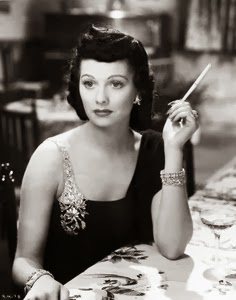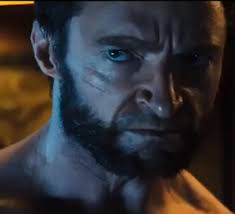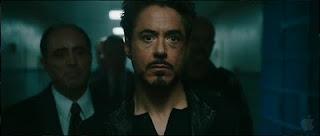I was originally going to write a review about it, but I didn't have enough to say. It was solid. Not great, but probably better than a lot of Superhero Movies. However, to reiterate, I'm not here to review Thor. I'm here to talk about a bigger picture (no pun intended). When I was sitting there in the dark Theatre, focusing only on this movie, I began to notice something about the action:
Specifically, how it failed to absolutely blow my mind! Don't get me wrong, it's not bad, and it has some moments of REALLY COOL STUFF. But why does the really cool stuff become confined to just moments, glimpses of a dream that never manifested in our physical world? Honestly, for the most part, the action is pretty standard stuff. I'm not at the edge of my seat, holding my breath in anticipation for what'll happen next, whilst my heart busts out a snare drum solo. I'm sitting down, patiently waiting through something that almost feels like a chore to watch. Almost.
I love action. But I only love it when it's done properly! There has to be a sense of genuine style, and an understanding of the conventions of film, to really pull off action. Isn't an action scene supposed to be an aesthetically-pleasing joyride for the senses that serves only to blow your mind? Is your mind genuinely blown by a big mess of swinging weapons, explosions, and occasional slow motion? If you think it is, let me explain to you why that's not true. In other words, let me tell you why my opinion = fact. Just kidding. But seriously, let me lay out a case that just might change (and blow) your mind. Here I go:
Filmmakers create a cool IDEA, but try and let it survive on premise alone.
I think we're in a Golden Age of Premise in film. Filmmakers are coming up with awesome ideas, specifically for fights. "Okay, so Thor's gonna show up in a beam of light, killing the guy who had the girl cornered! Then he's gonna hit this other dude in slow motion!" A notably awesome premise in this particular movie, a freaking battle across the universe through use of portals that transport you to different realms in the blink of an eye.
How awesome is that idea?! Now, this was handled pretty dang well. You can follow it. It could've been a complete DISASTER. But it wasn't. You might've said, "Woah. That was cool." However, notice that you didn't say, "WOAH DUDE HOLY $#!$%^# WHAT THE $#@%@ OH MY GOSH!" Imagine, if you will for a second, that same idea, handled with the sensibilities of someone like Genndy Tartakovsky, who, if you need reminding, came up with this:
First of all, WOAH. Second, It's a sort of similar concept, in a pretty distant way. What I mean, is that it's an interesting, unique concept, just like hopping across planes in the universe. However, where the Thor concept was handled well so you could follow it, the Samurai Jack concept was handled so you could follow it, AND be disoriented in just the right way, so that it could surprise you, keep you on your toes, and above all, blow your mind! It seems to me like there was a lot more care into the look and feel of the Samurai Jack scene than to the Thor scene. It's way more aesthetically pleasing, and very memorable, with it's timing of both action, cutting, and even music.
Thor looks just a little bland now doesn't it?
You know another really cool concept? Wolverine in Japan. Wolverine fighting and going on a quest in the hardcore side of Japan, AND WOLVERINE VS A SAMURAI!! That oughta be SICK!
Aaaand... It was kinda cool. I already reviewed this movie, but something I'm not sure I emphasized was the missed opportunity in the setting. There was even a scene with Wolverine against a bunch of NINJAS in the snow! Straight outta Lady Snowblood! Or the fight in Kill Bill where The Bride goes against Lucy Liu. Awesome. But apparently, this fight with WOLVERINE AND NINJAS was not exciting enough to warrant a clip on YouTube. I can't find it. Compare that again to Kill Bill and this scene where our hero fights a wave of enemies:
You don't have to watch all of it. I know it's kinda long. But just A TINY BIT and you'll see what I mean. THIS is blow-your-mind awesome. Same setting as Wolverine, with very similar fight scenarios, yet you saw NOTHING like this. Imagine if The Wolverine had scenes LIKE THIS!
First of all, WOAH. Second, It's a sort of similar concept, in a pretty distant way. What I mean, is that it's an interesting, unique concept, just like hopping across planes in the universe. However, where the Thor concept was handled well so you could follow it, the Samurai Jack concept was handled so you could follow it, AND be disoriented in just the right way, so that it could surprise you, keep you on your toes, and above all, blow your mind! It seems to me like there was a lot more care into the look and feel of the Samurai Jack scene than to the Thor scene. It's way more aesthetically pleasing, and very memorable, with it's timing of both action, cutting, and even music.
Thor looks just a little bland now doesn't it?
You know another really cool concept? Wolverine in Japan. Wolverine fighting and going on a quest in the hardcore side of Japan, AND WOLVERINE VS A SAMURAI!! That oughta be SICK!
Aaaand... It was kinda cool. I already reviewed this movie, but something I'm not sure I emphasized was the missed opportunity in the setting. There was even a scene with Wolverine against a bunch of NINJAS in the snow! Straight outta Lady Snowblood! Or the fight in Kill Bill where The Bride goes against Lucy Liu. Awesome. But apparently, this fight with WOLVERINE AND NINJAS was not exciting enough to warrant a clip on YouTube. I can't find it. Compare that again to Kill Bill and this scene where our hero fights a wave of enemies:
You don't have to watch all of it. I know it's kinda long. But just A TINY BIT and you'll see what I mean. THIS is blow-your-mind awesome. Same setting as Wolverine, with very similar fight scenarios, yet you saw NOTHING like this. Imagine if The Wolverine had scenes LIKE THIS!
It should've. The concept called for it. (Here we are, back at the base of my argument.) But like I said in bold type way back up there, filmmakers are just satisfied with a cool idea. Because they've seen stuff like Kill Bill, and Samurai Jack, and Bruce Lee, and Braveheart, they have a pretty nice grasp on cool IDEAS. However, they rarely flesh out those ideas entirely with their cinematography and overall direction of the scene. But sometimes, things click, and you have little glimpses of awesomeness, which Thor contains more of than usual.
Staying in the Superhero genre, take a look at what Sam Raimi managed to do in Spider-Man 2 (Around 0:20).
That part where they fall, to this day, is one of the coolest things I've ever seen in a movie. THEY'RE JUST FALLING AND FIGHTING and Sam Raimi made it awesome! How often do Superheroes fall now? Often enough to where you probably have a million fuzzy examples in your head. Yet Sam Raimi made his stick. He knew it too, he used it more in Spider-Man 3.
So, with all of the above in mind, I've compiled a list of suggestions for future filmmakers to keep in mind when they want awesome action scenes.
NOTE: I've recruited a friend of mine, Christopher Maldonado, to help me produce more regular content on this blog. He will be making his own posts on film from time to time, just so that posts become more frequent than once a month. Be nice to him!
So, with all of the above in mind, I've compiled a list of suggestions for future filmmakers to keep in mind when they want awesome action scenes.
- Pace yourself. Slow down a bit, or even stop to build suspense and give someone a heart attack while nothing happens.
- Put more care in your sound/silence, including music. Coordinate it thoroughly with what happens on screen. Harmony between the audio and the visual not only helps one follow what happens, but is very pleasing to the senses, and helps to create very memorable moments. Sound can also be a great inspiration when editing, helping you to create awesome, unique sequences.
- FRAME UP BEAUTIFUL SHOTS. Thought out composition in your shots can create beautiful images. When beautiful imagery is applied to action sequences, plus the scene has everything above in mind, the scene is ushered onto another level of existence. Interpreting images is one of the most primal functions of the human mind. Images reach into our very souls. What I'm saying is that imagery is important. If you make a beautiful shot, it will STICK. For sure. It tops off the aesthetics cake with a delicious layer of your favorite flavor of icing.
NOTE: I've recruited a friend of mine, Christopher Maldonado, to help me produce more regular content on this blog. He will be making his own posts on film from time to time, just so that posts become more frequent than once a month. Be nice to him!





































